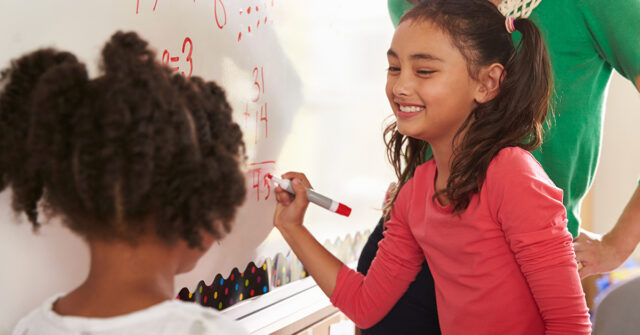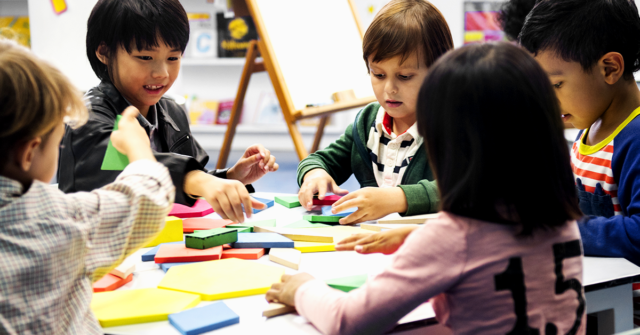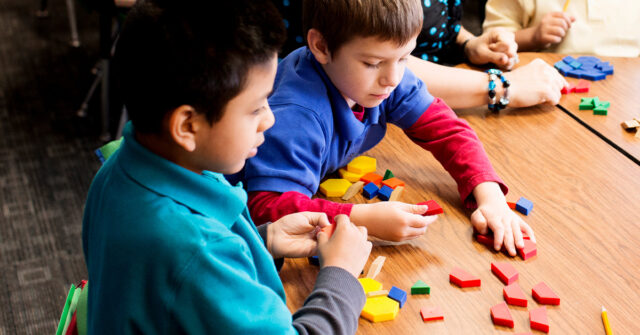
We recognize the power of reading a good story. But what might a good story bring to our math lessons?
How might it enhance our teaching and spur student discovery? How might it support the development of problem solving? How might it extend math beyond computations to building arguments, creating models, and understanding the structure of math?
The Power of Literature
We created the Math by the Book series to help educators connect math teaching with great children’s literature. We’ve seen children’s literature energize our classrooms, providing opportunities to talk about math ideas and prompt students to connect those ideas to their experiences outside the classroom.
Here are seven ways that incorporating children’s literature into mathematics lessons can change the atmosphere, focus, and energy in your math classroom!
- Engagement
Students love stories! They can be fun, exciting, surprising, and enlightening. - Context and Connections
Stories give context to math ideas. They connect those ideas to our students’ background knowledge and world experiences. They show mathematics in engaging real and fictional situations and provide opportunities for students to connect abstract math skills and concepts to those real situations. - Retention
As students build math understanding through explorations and discussions of story events, they connect concepts to context, heightening their retention of the mathematics. For example, students could explore comparing numbers after reading Too Many Mangos by Tammy Paikai. Through the story context and hands-on follow-up tasks in which they envision comparing wagonloads of mangos, they make sense of the concept of comparing two-digit numbers. The context helps them connect the concept of more and fewer to a memorable story, supporting their retention of the ideas. - Problem Solving
As students solve problems related to story characters and events, their focus extends beyond just how to do math and turns to what math to do. Rather than doing computations alone, students apply their understandings to solve problems. In Saturday by Oge Mora, Ava and her mother check out books at the library, get new hairdos, picnic at the park, and ride a bus to a puppet show. Through problem-based after-reading tasks, students act out and discuss story events and decide which math operation relates to each one. Seeing and discussing lots of contexts gives them ongoing experiences that help them understand operations and learn to think like problem solvers. - Collaboration
After reading or listening to a good story, we can’t resist talking about it. We want to share our thinking and hear the thinking of others. We debate interpretations and build arguments to convince others of our viewpoints. We fold their ideas into our own to extend and refine our own interpretations. Collaboration and reflection are critical ways that students make sense of math ideas. Stories provide a context for students to discuss thinking that might be harder to express in a purely abstract way. - Energy
Tasks related to stories invite our students to think, talk, and relate the story to their own experiences, which yields an energy that doesn’t happen when students do math worksheets. For example, students could explore measurement after reading Hide and Snake by Keith Baker—they are building, talking, and making sense of measurement concepts and having fun doing it! They are truly excited to be a part of the work, and that excitement can be felt in the classroom. - Confidence
Linking math to stories can be comforting to students who love reading but are fearful of math or have struggled with it in the past and can build confidence as they begin to understand the math ideas through the stories.
When students engage with a story, they explore characters and situations and discuss, reflect, and interpret the story in their own ways. So what will engage them in deep math discussions and allow them to explore their math understandings? Stories!

Math by the Book is a new K-5 resource written by teachers, for teachers, to help connect math teaching with great children’s literature. Learn more at MathByTheBook.com.

Sue O’Connell has decades of experience supporting teachers in making sense of mathematics and effectively shifting how they teach. A former elementary teacher, reading specialist, and math coach, she is also a nationally known speaker and education consultant who currently directs Quality Teacher Development, an organization providing math professional development for schools and districts across the country. Sue is also the lead author of the Math in Practice series.


